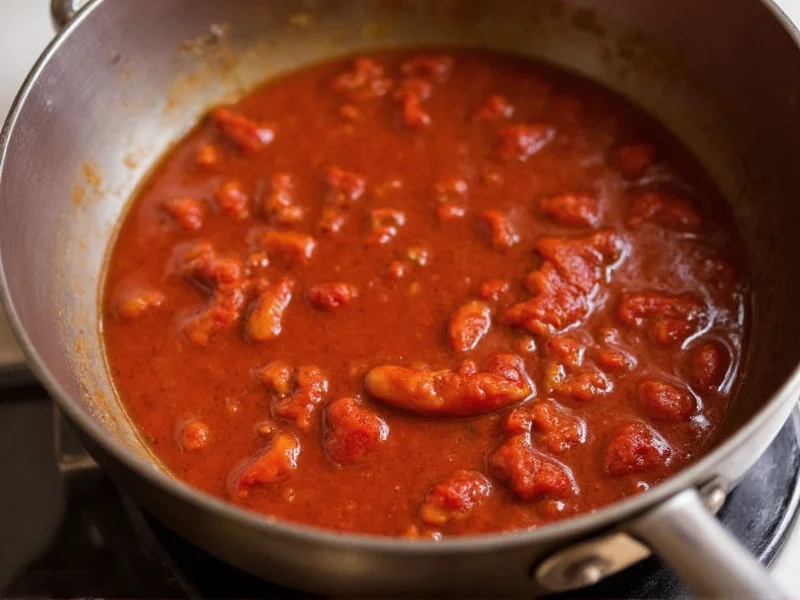The most effective ways to reduce heat in chili include adding dairy products like sour cream or yogurt, incorporating sugar or honey, mixing in acidic ingredients like lime juice, or diluting with more non-spicy ingredients. Dairy works best immediately as it contains casein that binds to capsaicin, the compound responsible for chili heat. Understanding how to make chili less spicy immediately requires knowing why these methods work and how to implement them without ruining your dish's flavor profile.
Why Chili Gets Too Spicy: The Science Behind the Heat
Capsaicin, the compound found in chili peppers, binds to pain receptors in your mouth, creating that burning sensation. This oil-soluble molecule doesn't mix with water, which is why drinking water does little to alleviate the burn. The key to reducing spiciness in chili lies in understanding how different substances interact with capsaicin.
Most Effective Methods to Reduce Heat in Chili
When you need to fix chili that's too hot, these scientifically-backed methods work best. Implement them one at a time, tasting after each addition to avoid overcorrecting.
| Method | How It Works | Implementation Tips | Flavor Impact |
|---|---|---|---|
| Dairy Products | Casein protein binds to capsaicin and washes it away | Add 1/4 cup sour cream, yogurt, or whole milk per serving | Creates creamier texture; minimal flavor change |
| Sugar or Honey | Counteracts heat perception through sweetness | Start with 1 tsp sugar or 1/2 tsp honey per cup of chili | Adds subtle sweetness; balances acidity |
| Acidic Ingredients | Breaks down capsaicin molecules | Add 1 tbsp lime juice or vinegar per cup of chili | Enhances brightness; may alter flavor profile |
| Dilution | Reduces capsaicin concentration | Add equal parts beans, tomatoes, or broth | Requires additional seasoning; waters down flavor |
| Starchy Ingredients | Absorbs capsaicin oil | Mix in cooked rice, beans, or potatoes | Changes texture; makes chili heartier |
Step-by-Step Guide to Cooling Down Spicy Chili
When you realize your chili has too much heat, follow this systematic approach:
- Stop cooking immediately - Continuing to cook can intensify the heat as capsaicin releases further
- Remove from heat source - Prevents additional capsaicin extraction from peppers
- Add dairy first - Stir in 1/4 cup sour cream or yogurt per serving for immediate relief
- Incorporate sugar - Add 1 teaspoon of sugar per cup of chili to balance heat perception
- Introduce acidity - Mix in lime juice (1 tablespoon per cup) to break down capsaicin molecules
- Dilute if necessary - Add non-spicy ingredients like beans or tomatoes if heat persists
- Simmer gently - Allow 10-15 minutes for flavors to integrate after each addition
What NOT to Do When Fixing Spicy Chili
Certain common approaches to tone down spicy chili actually make the situation worse:
- Don't add more water - Capsaicin is oil-based and won't dissolve in water, potentially making heat more concentrated as water evaporates
- Avoid excessive sugar - Too much can create an unbalanced sweet-spicy flavor that's worse than the original heat
- Don't add more hot ingredients - Some suggest "balancing" heat with more peppers, which only increases capsaicin levels
- Don't serve immediately - Chili often tastes spicier when hot; letting it cool slightly reduces perceived heat
Preventing Overly Spicy Chili in the Future
The best approach for how to cool down spicy chili is prevention. Follow these professional tips:
- Seed and membrane removal - The white membranes contain most capsaicin; remove them before chopping peppers
- Gradual pepper addition - Add hot peppers in small increments, waiting 10 minutes between additions to assess heat level
- Proper tasting technique - Use a spoon, not your finger, and have dairy nearby when testing spiciness
- Understand pepper heat levels - Know the Scoville ratings of peppers you're using (jalapeños 2,500-8,000 vs. habaneros 100,000-350,000)
- Acid balance - Include tomatoes or other acidic ingredients early, as they help moderate heat development
Special Considerations for Different Chili Types
The best method to decrease spiciness in chili varies by recipe:
- Bean-based chili - Add extra beans and tomatoes for dilution without significantly altering flavor
- Meat-heavy chili - Dairy works best as it complements the richness without watering down the meat flavor
- Vegan chili - Use coconut milk instead of dairy, plus extra lime juice and a touch of maple syrup
- Tomato-based chili - Additional tomato puree helps dilute heat while maintaining consistency
Time-Based Solutions for Overly Spicy Chili
If you have time before serving, these methods improve results:
- Refrigeration overnight - Chili often mellow significantly after 24 hours as flavors integrate
- Additional simmering - Extended gentle cooking (30-60 minutes) can mellow harsh heat notes
- Cooling before serving - Heat perception decreases as temperature drops; serve slightly warm rather than piping hot











 浙公网安备
33010002000092号
浙公网安备
33010002000092号 浙B2-20120091-4
浙B2-20120091-4